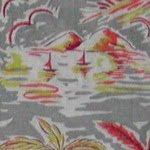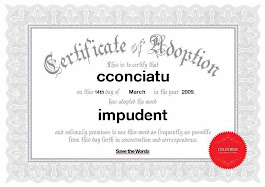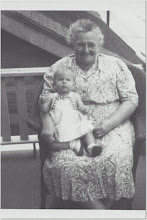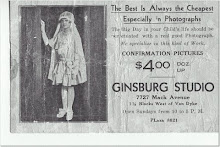
Dated November, 28, 1912, the Stratton Co. thanks Miss L. J. Gilmore for her order of flour and assures her it is will be shipped on the first railroad car to Hillsboro, New Hampshire, USA
Meanwhile, across the Big Pond and in the town of Hampshire, England, for which New Hampshire was named, this day in history, marks the beginning of the Tichbourne Dole. This local holiday, which began March 26, 1050, is still celebrated each year on the Feast of the Annunciation which is also known as Lady Day.
 The Tichbourne Dole by Gillis Van Tilborgh, 1671
The Tichbourne Dole by Gillis Van Tilborgh, 1671Each year, estate flour is milled and then blessed at the Tichbourne estate by the local priest. A gallon of flour is doled out to each adult resident of Hampshire and a half gallon is given to each child. It was the deathbed wish of Lady Mabella Tichbourne that a portion of produce from the estate be given to the poor each year. The story of the Tichbourne Family and the deathbed wish is filled with stories of impostors, intrigue, tragedy and even a curse! Read more here.
Flour has been around since the beginning of time and is a staple in every civilization whether it be made from local wheat, corn, barley, or just about any grain, root, or nut. The word flour comes from the Old French "fleur" which meant "blossom". Figuratively it also meant " the finest" as in the "blossom" of the crop. Show me a kitchen without flour, and I'll show you someone who has the car keys and a grocery list in their hand.
The price of cotton bottomed out in the United States in the early 1900's. It became cheap packaging material for flour, feed and other staples. The "waste not, want not" minded housewife saved the soft white material from the 25 pound bags and used it to make aprons, dishtowels, pillow cases, wash cloths, diapers, and even underwear for the family.
It was a difficult task, removing the label, and sometimes it remained. Stories made the rounds about the wife who left the "self rising" label on her husband's underwear and the young miss who tripped and fell, giving her suitor a glimpse of her knickers which read "Best in the Midwest".
It didn't take long for the dealers of sugar, flour and other staples to catch on to the use of the sack cloth. In order to notch up their sales they began dying the cotton sack material in solid colors.
During the depression, this material was as dear as the contents, and the sellers began dying patterns onto the cloth. Flour sack dresses became the fashion of the day. Repair, reuse and don't throw anything away was the motto of the times.
When father was ready to make a trip to town, whichever daughter was most in need of a new dress would accompany him and choose the design. Two bags? A matching dress for little sister.
Borders were available too. Perfect for aprons and pillow cases. Cotton flour sacks continued, especially in rural areas, into the 1960's.
Once paper and plastic packaging became cheaper and more efficient, those soft cotton flour sack dresses became of thing of the past.
Stop by and see Beth at The Best Hearts Are Crunchy for more Postcard Friendship Friday Fun!









































.JPG)




































14 comments:
Really liked your post. would you like to put your name in for my giveaway on my blog:? It inclused some pieces of feedsacks.
http://viridian61.blogspot.com/2010/03/post-150-give-away-contest.html
Wonderful post. Milling flour really changed things around in the kitchen! Happy PFF!
Wow, excellent bit of history! The world goes round and lives on because of grains and giving to the poor...we should still practice that today. Thanks for sharing!
Wonderful post - so full of interesting information!TFS!
Thanks too for stopping by - look forward to *seeing* you again!
Happy PFF!
XOXO LOLA:)
I love seeing old flour sack prints.
Wow! How cool and informative! I really enjoyed reading your blog. Those postcards are wonderful!
Happy PFF!
Thanks for all the info on flour and flour milling! Happy PFF! :)
I really enjoyed your blog about flour. I look for the old feedsacks sometimes using them for my sewing projects.
Judy
What a fascinating post, flour has never been so interesting. Did not know about Tichbourne, always something to learn in the blogosphere.
As always you do a great job of pulling location together with history and points of interest to make one fantastic Postcard Friday post. And I always learn something new as well.
Very interesting! I just read "The Worst Hard Times" about the dust bowl and the depression, and making these dresses out of flour sack cloth makes total sense.
Thanks!
Supper history.... thanks for all the great info... love all the flour bag prints, PFF
i loved this post! if only people would re-embrace the "waste not, want not" attitude and recycle more nowadays too!
I loved your postcars and your post that went along with them!! So many historical facts and new things to learn! I had never heard about "Lady Day"--very interesting! I'm sure a lot of people appreciated the flour when that day came!!
Have a great day!
Post a Comment